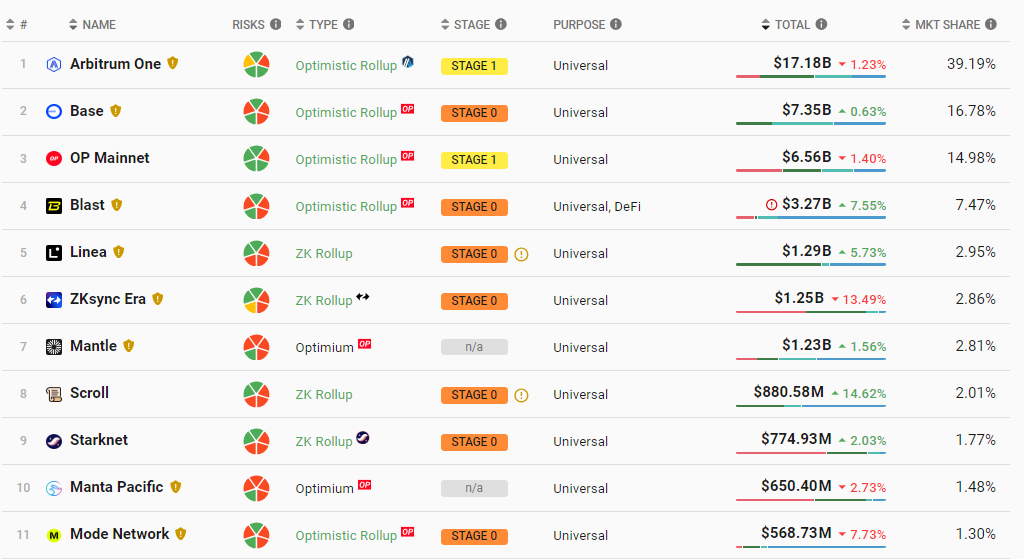Several teams behind layer-2 rollups, including Linea, zkSync, Arbitrum, and Optimism, have expressed confidence that full decentralization of Ethereum layer 2s will be achieved in the next few years. These teams shared their insights with Cointelegraph in June, highlighting that while progress has been slow due to prioritizing user experience and security enhancements, significant strides are now being made toward decentralization.
The term “Stage 2 decentralization” refers to the final phase in Ethereum founder Vitalik Buterin’s roadmap for layer-2 decentralization milestones. Achieving this stage would make censorship nearly impossible on these networks, which aim to scale Ethereum by handling transactions on separate networks.
1. Progress Towards Decentralization
Linea founder Nicolas Liochon mentioned that within the next few years, most L2s are expected to reach this milestone. He noted that recent upgrades, such as the Dencun upgrade, have significantly reduced user costs, paving the way for further decentralization efforts. Liochon’s team plans to launch a testnet with new decentralization features in the coming months.
Anthony Rose, CTO of zkSync developer Matter Labs, anticipates that the leading L2s will reach Stage 2 within two to three years. He expects some consolidation in space, with a few large networks dominating, composed of multiple individual chains, which will be fully decentralized.
Optimism co-founder Karl Floersch believes the transition to Stage 2 will be swift once initial challenges are overcome. He emphasized the complexity of implementing multiple proof systems, which are crucial for security. Floersch is optimistic that once one network reaches Stage 2, others will follow quickly due to the collaborative nature of open-source development.
Steven Goldfeder, co-founder of Arbitrum developer Offchain Labs, stated that their network is very close to reaching Stage 2. Currently, Arbitrum’s fraud proofs can be overridden by a security council, but this could be changed through a community vote to remove this emergency power, which Goldfeder sees as the last hurdle.
Vince Yang, CEO of layer-3 network zkLink, also foresees full decentralization within two years. He pointed out that the current lack of user interest and financial incentives for L2/L3 networks to maintain control have slowed progress. However, zkLink is ready to fully decentralize, awaiting the lead of top Layer 2s.
2. Challenges Ahead
Despite the optimism, some teams believe full decentralization is still a distant goal. Metis co-founder Kevin Liu explained that many L2s rely on token-voting systems that concentrate control among large tokenholders. Liu advocated decentralizing sequencers to distribute network ownership among nodes and stakers.
Liu acknowledged the technical challenges and the need for ongoing upgrades but stressed the importance of continuing to work toward decentralization. He emphasized that decentralization involves multiple layers, and Metis’s approach aims to drive technical progress in this direction.
3. Stages of Decentralization
Vitalik Buterin’s November 2022 post outlined three stages of rollup decentralization. A Stage 0 rollup allows independent computation of the rollup’s state but retains centralized control over transaction censorship. A Stage 1 rollup implements fraud or validity proofs, preventing the team from publishing false state roots but allowing a security council to override transactions. In a Stage 2 rollup, the security council’s power is further restricted, making censorship nearly impossible.
Blockchain analytics platform L2Beat evaluates L2 networks based on these criteria.

Recent controversies, such as the Linea team pausing withdrawals and censoring an attacker’s address, have highlighted the slow progress toward decentralization. Buterin has argued that rollups should reach Stage 1 by the end of 2024 or risk not being considered true rollups.
The information provided in this article is for reference only and should not be taken as investment advice. All investment decisions should be based on thorough research and personal evaluation.






[…] Layer 2 Full Decentralization Milestones […]
Comments are closed.